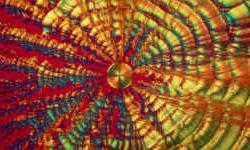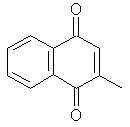

 |
 |
 Vitamin K2 Crystals Copied without permission from Roche Product Information |
Vitamin KThere are three forms of the fat soluble vitamin K. The first two, vitamin K1 (phylloquinone) and vitamin K2 (a group of compounds called menaquinones) are found naturally and the third, vitamin K3 (menadione) is a synthetic compound which is converted to vitamin K2 in the intestine. Vitamin K1 is 2-methyl-3-phytyl-1,4-naphthoquinone and is found in plants. The Menaquinones differ in the number of isoprene units in the side chain and in their degree of unsaturation, and are synthesised by bacteria in the human and animal intestines.Top Chemical Structures Fig.1 The Chemical Structure of Vitamin K1 (phylloquinone) 3D Structure of Vitamin K1  Fig.2 Menadione - The Base Structure of Vitamin K3 Top Principal Sources in FoodPrincipal dietary sources of vitamin K are:
Vitamin K in the BodyVitamin K is essential for blood clotting, as it is involved in production of the protein prothrombin, which converts soluble fibrinogen in the blood to insoluble fibrin which makes up the greater part of blood clots. Deficiency of vitamin K is rare due to the bacterial synthesis in the gut.Top StabilityThe vitamin K compounds are relatively stable to heat and reducing agents, but are sensitive to acid, alkali, light and oxidising agents.Top |